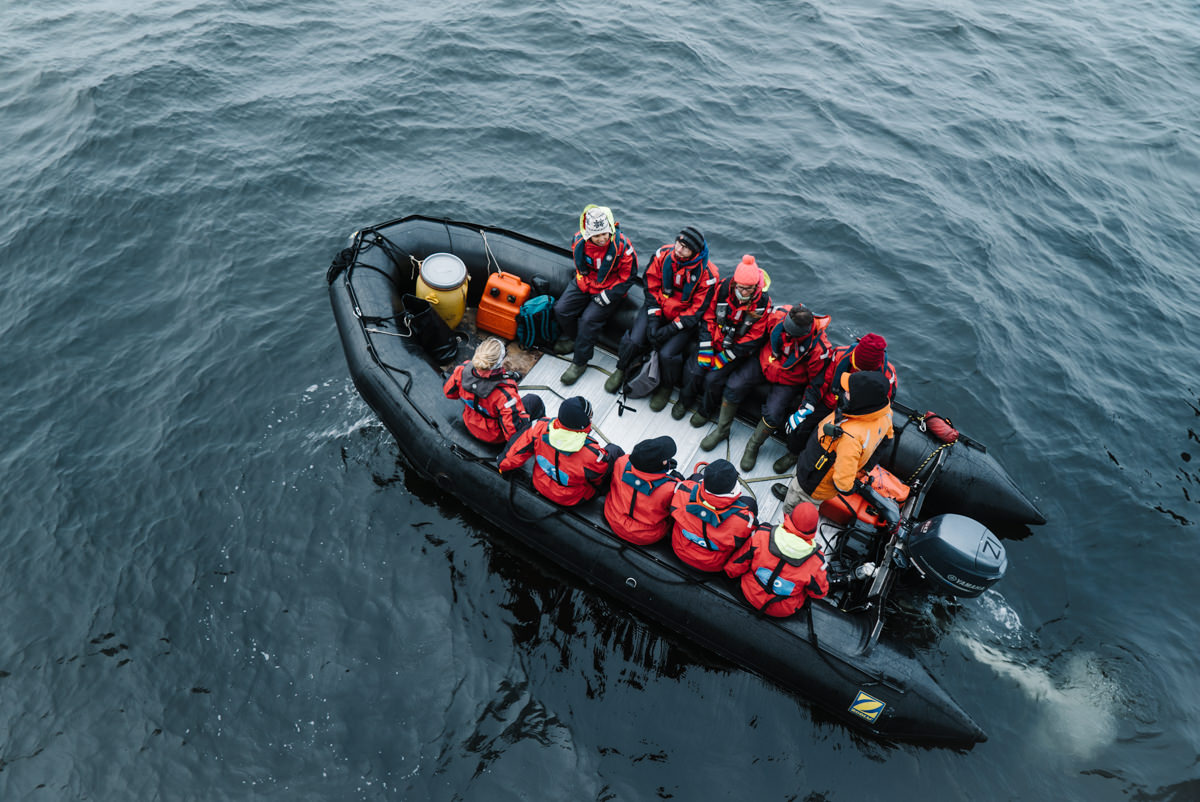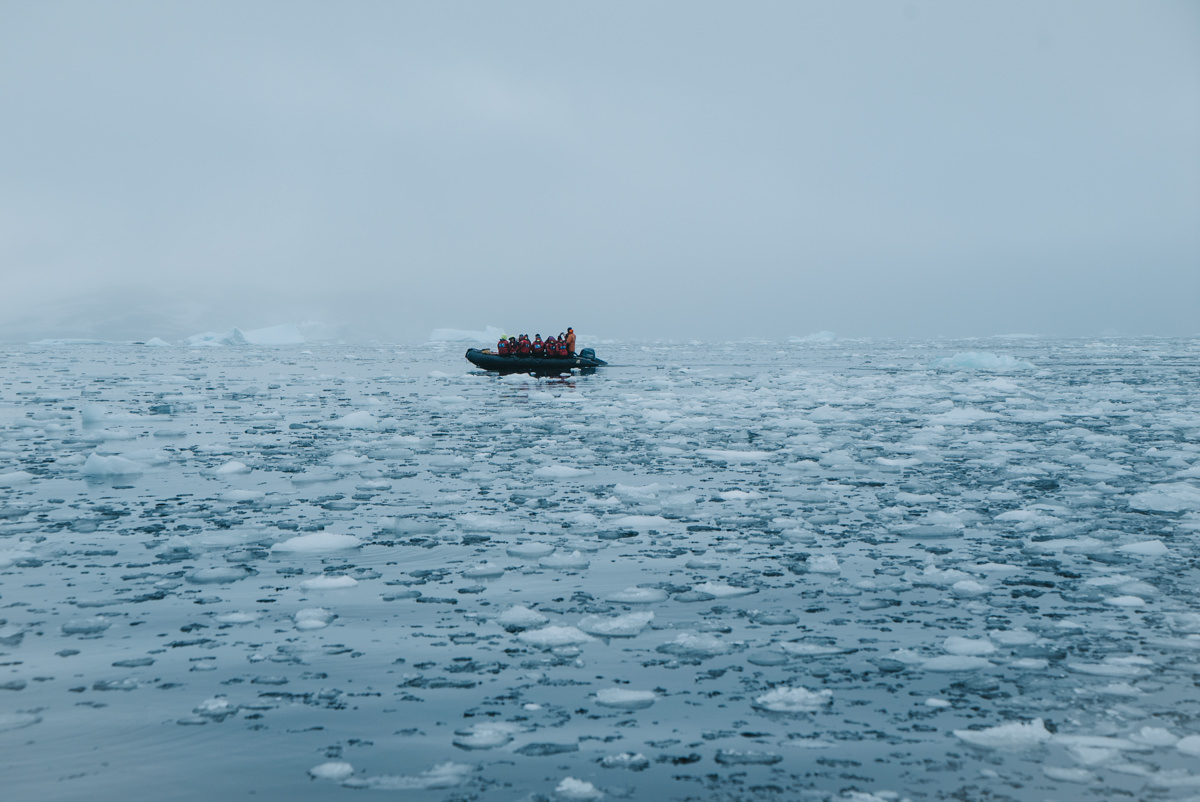ANTARCTICA Day 4: Petermann Island & Vernadsky Station
I was always in and out of sleep when crossing the Drake Passage at night, and on the third night at one point I was awake and noticed that the ship had come to a stop. We were there. I eagerly popped up to look out the window, but all there was to see was the light of the ship in the darkness of night (this was early March, so late in the Antarctic summer so the sun actually did set at night). As day broke, I popped up again to look out my window to see icebergs floating in the mist. I couldn’t make out where the coastline was, but without a doubt we were in Antarctica.
At 6:45 the wakeup announcement came over the loudspeaker welcoming us to Antarctica! The announcement informed us that the temperature was 1 degree Celsius, that breakfast would be served at the bright and early time of 7am, and then we were to be at the gangway at 8am. After breakfast we all rushed to put on those layers and layers that we had all so carefully considered packing (although 1 degree Celsius to anyone but me is really not all that cold). We put on life vests, lined up on the deck, and loaded in ten at a time to the zodiacs, which took us out on our first cruise into the crisp air and icy water of Antarctica! In the fog we saw floating icebergs of all sizes, and over a dozen crab-eater seals swimming around and relaxing on the ice. We even saw one lone leopard seal on its own iceberg! I was impressed at how well the Zodiacs did at navigating through (and sometimes straight over) the ice chunks, these rubber boats felt surprisingly indestructible.
The first look at our ship in Antarctica
A group of crabeater seals (these seals are poorly named as they don’t actually eat crab)
Petermann Island
65°10'S 64°10'W
Petermann Island is a two mile wide island inhabited only by penguins and other sea birds. There is an emergency refuge hut on the island built by the Argentine Navy in 1955, and a wooden cross that stands on the rocks commemorating three members of the British Antarctic Survey who lost their lives attempting to cross the sea ice between Petermann and the former British Station (now Ukrainian Vernadsky Station).
Left: Parent Gentoo penguin nesting a late in the season born chick. By now most of the chicks were 2/3 the size of the adults, but easily distinguishable by their fluffy grey feathers and clumsy movements. Petermann was my penguin dream come true. The majority of the penguins on the island were Gentoos, although we spotted one Chinstrap penguin in a crowd.
Jeff the photographer taking a photo of Mr. Penguin Counter, Ron Naveen
The harsh side of being in a pure natural environment, seeing many dead penguins. Skua birds hunt young and injured penguins, something that I sadly witnessed firsthand.
We had three hours to wander freely around the island at our own pace, taking as much time as we wanted in any particular spot. The time flew by, and as what came to be a pattern, Alex and I took the very last zodiac back to the ship. Once back on board we scrubbed the penguin poop from out boots, took off all of the layers, and enjoyed lunch in the dining room while the ship scooted over to our next landing site.
Vernadsky Ukrainian Research Station
Our afternoon landing was to Winter Island, and our visit began with a leisurely zodiac cruise through the icebergs. We eventually made our was to Vernadsky Station, where a young resident gave us a tour of the station. A base has been on Winter Island since 1947, but the current location of Vernadsky station was established in 1954 by the British Antarctic Survey. In 1996 the British decided it would be too costly to disassemble the no longer needed base, and sold the station to the Ukrainian government for 1 £, and it was renamed Vernadsky after Soviet mineralogist Vladimir Vernadsky.
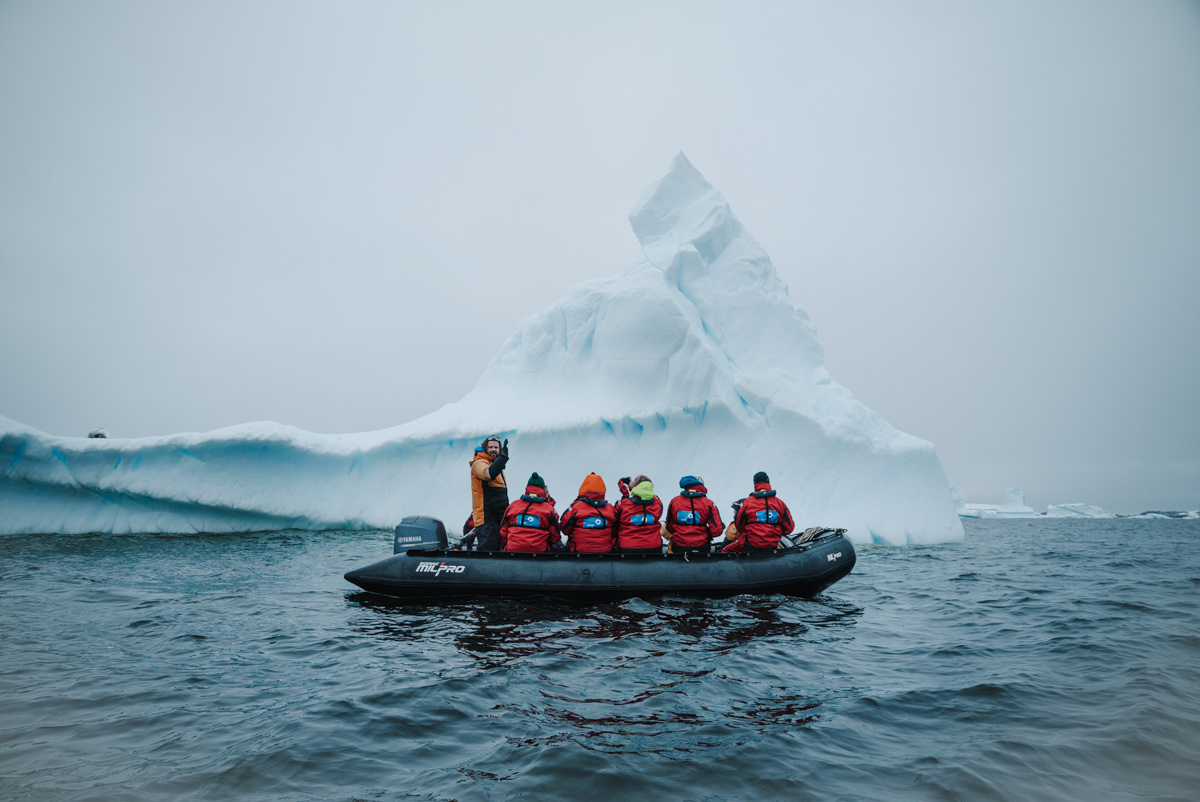
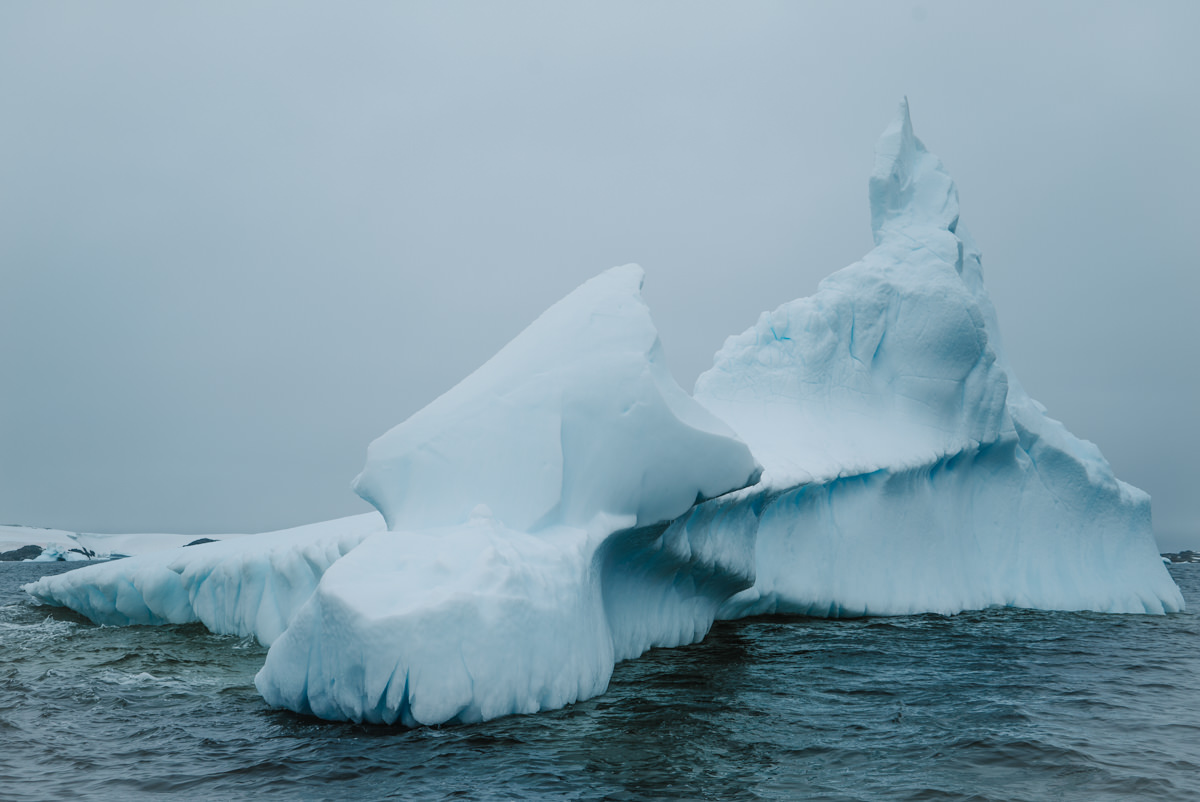

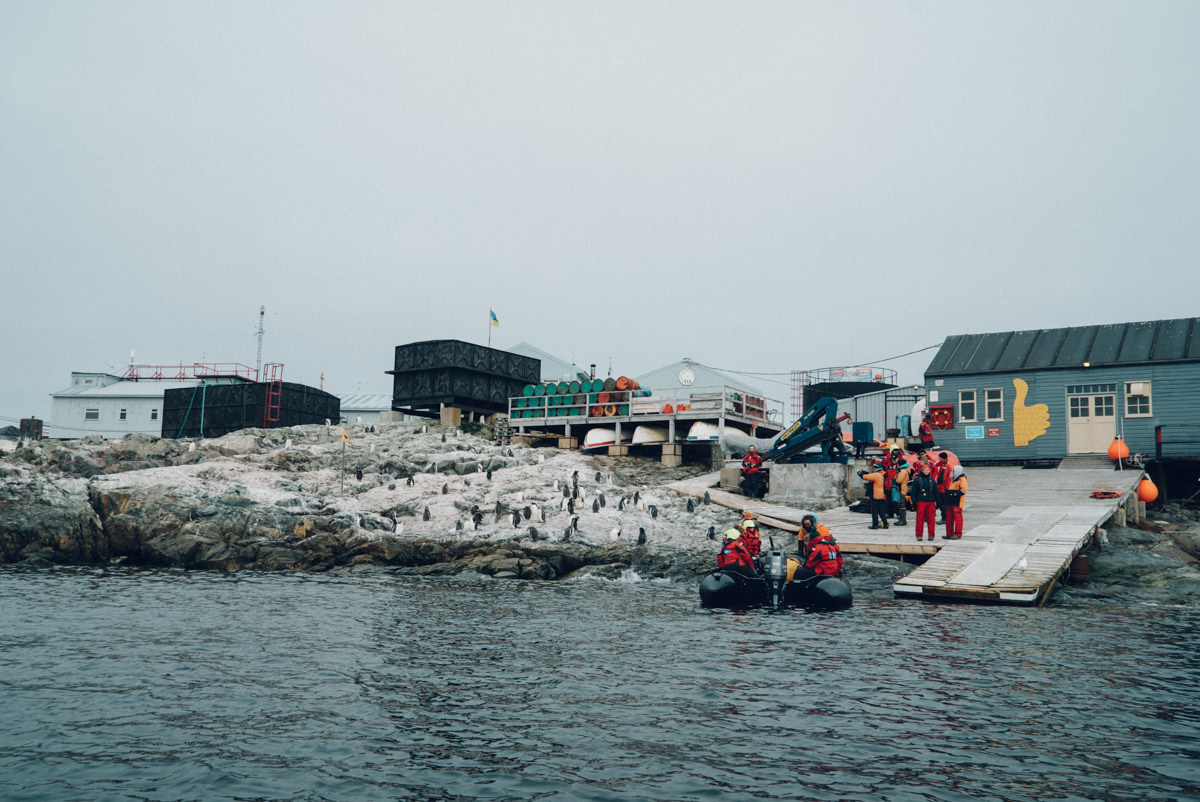
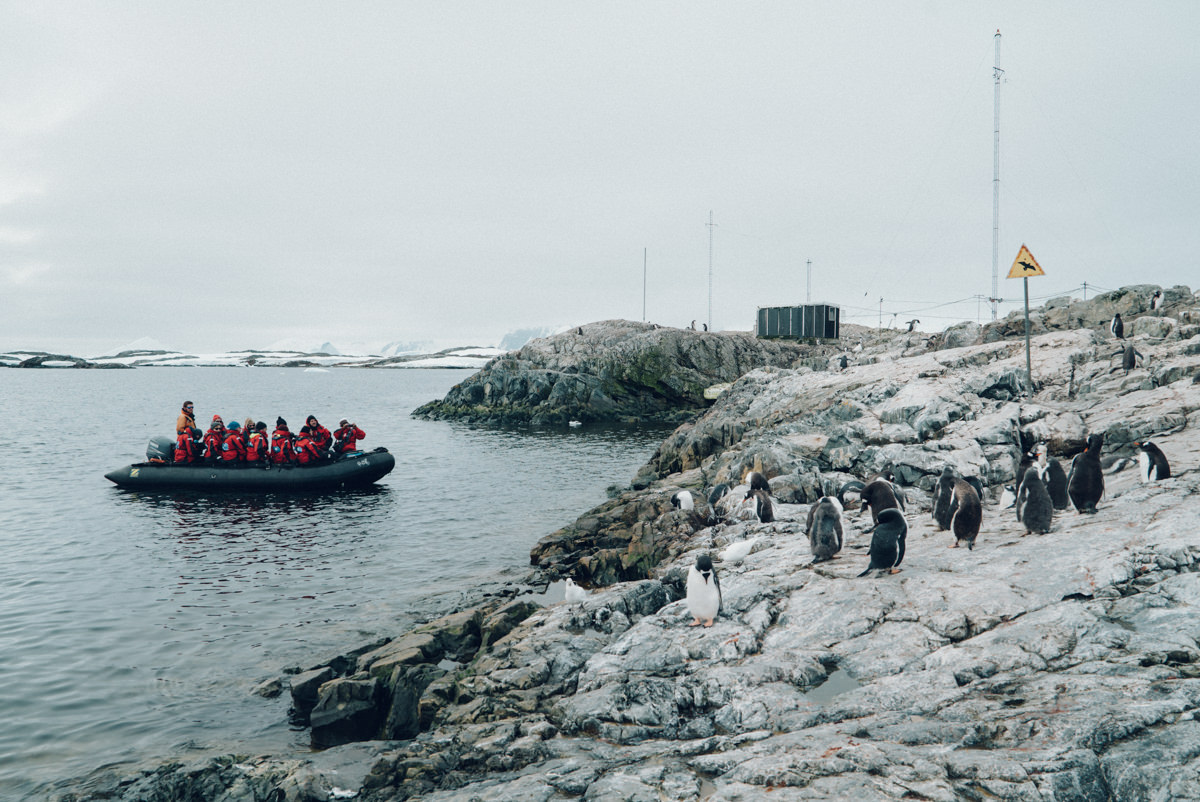
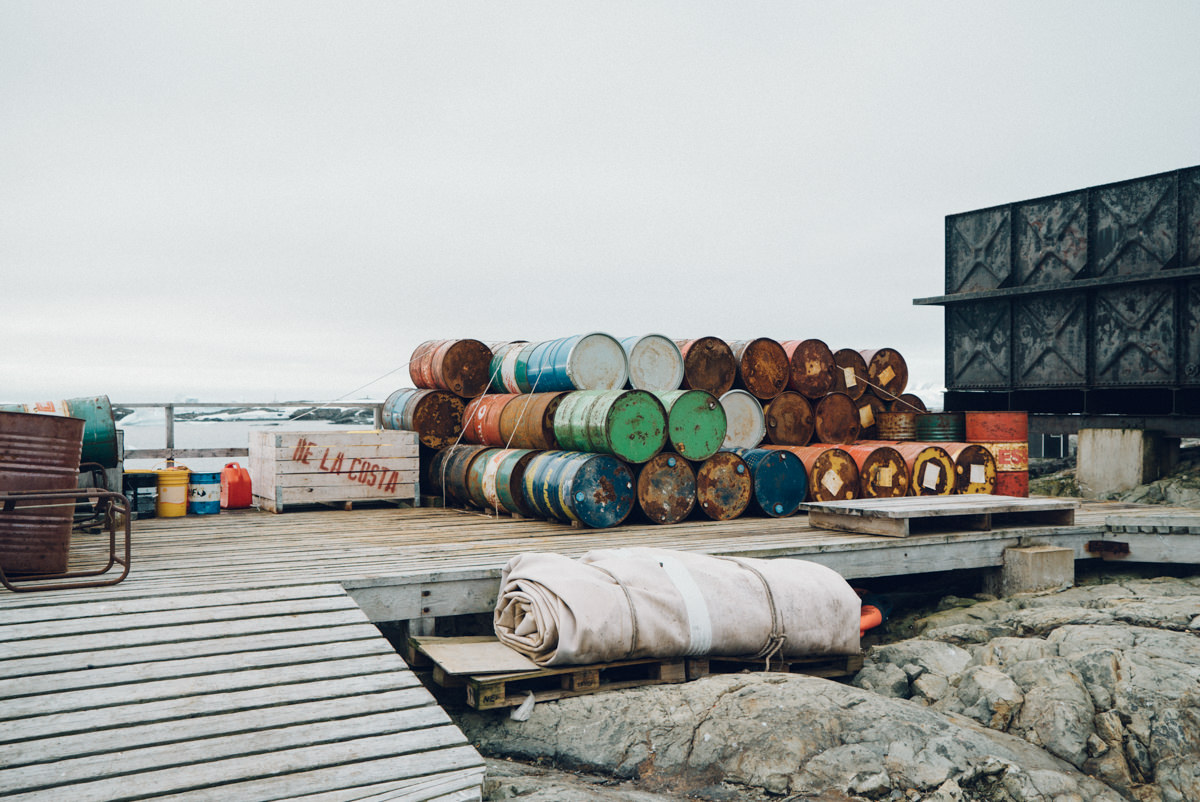
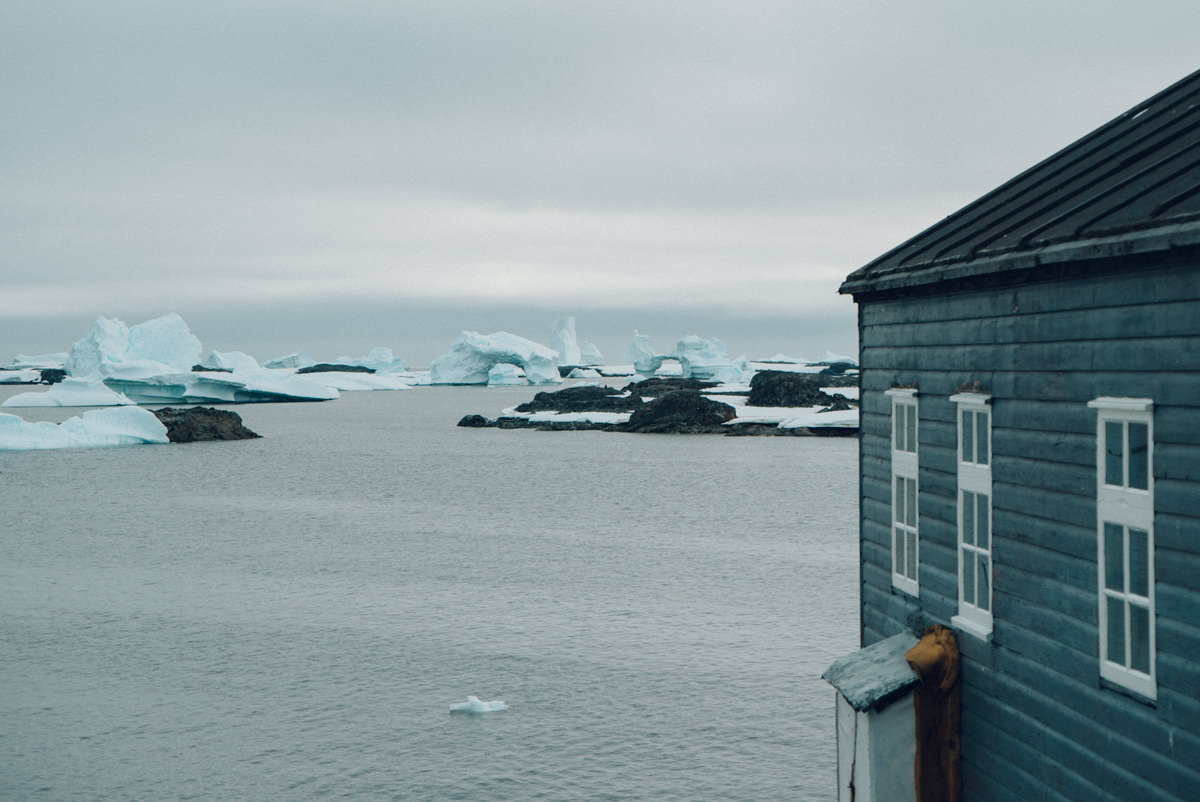
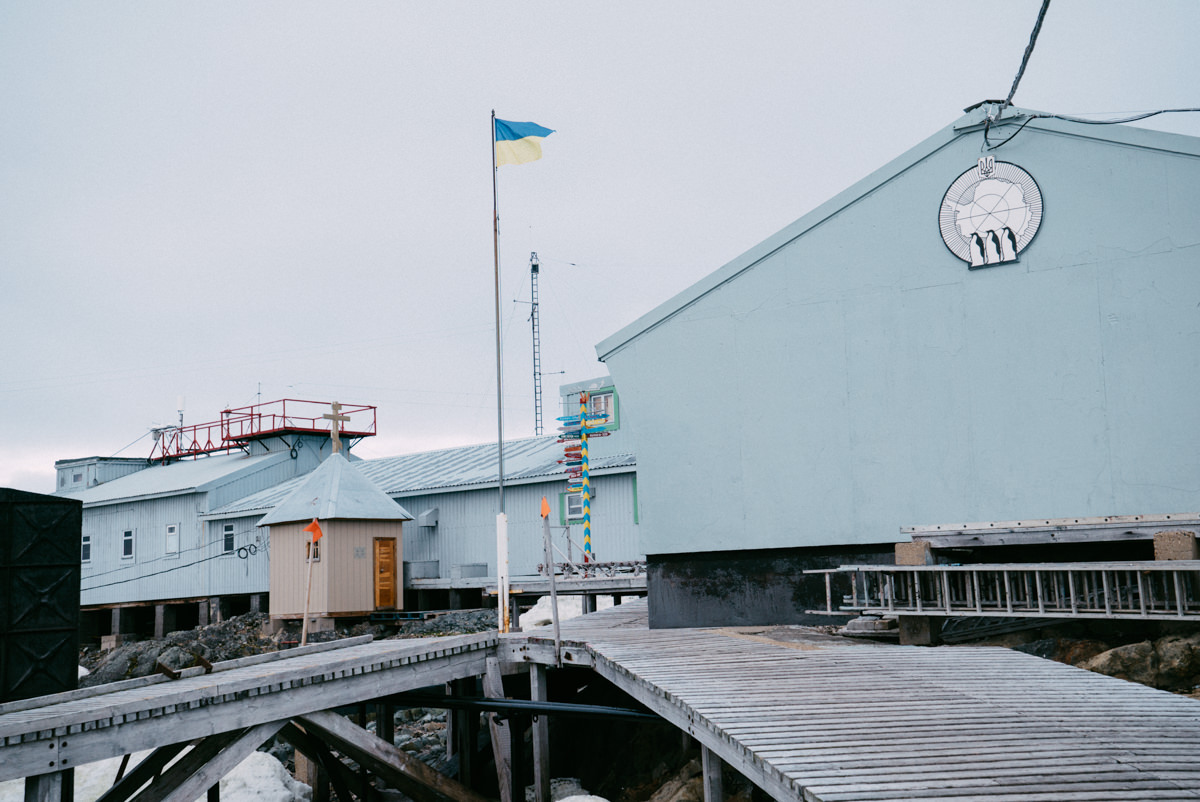
We were told that Vernadsky would be where we would get our passports stamped (with that cool 3-penguin logo of the station), and we could mail postcards to friends and family back home. Vernadsky also had a bar where we could trade a bra for a shot of glacier vodka, but I spent the entire duration of my free time writing postcards to everyone whose address I could remember. I was excited that the station had a gift shop, and I bought a couple of Vernadsky patches that I couldn’t resist because they featured a penguin in the design.
The Wordie House
There was still more to see on Winter Island after our tour of Vernadsky. A short zodiac trip around to the other side of the island brought us to the Wordie House, one of the the first structures ever constructed on the island, in 1947. From 1947 until 1954 when the station relocated to the other side of the island, only 4 or 5 people would occupy the small house at a time, and today the house stands as a time capsule furnished and stocked with items from its years in service.
The view from the hillside overlooking the Wordie house was one of the most beautiful views I have ever taken in. The sun shining on the massive snow covered mountains in the distance partially obscured by grey clouds and and the massive slab of glacier snow and ice. A lone penguin waddled through my view making it that much more surreal.
I didn’t want to leave. I caught the last zodiac back to the ship, and for the first time all day the clouds had lifted enough to see the low sun shining on the ship. Following our exciting first day I enjoyed happy hour and dinner with a calm stomach and full appetite, and finally got a good nights sleep ready for our second day of excursions in Antarctica!

